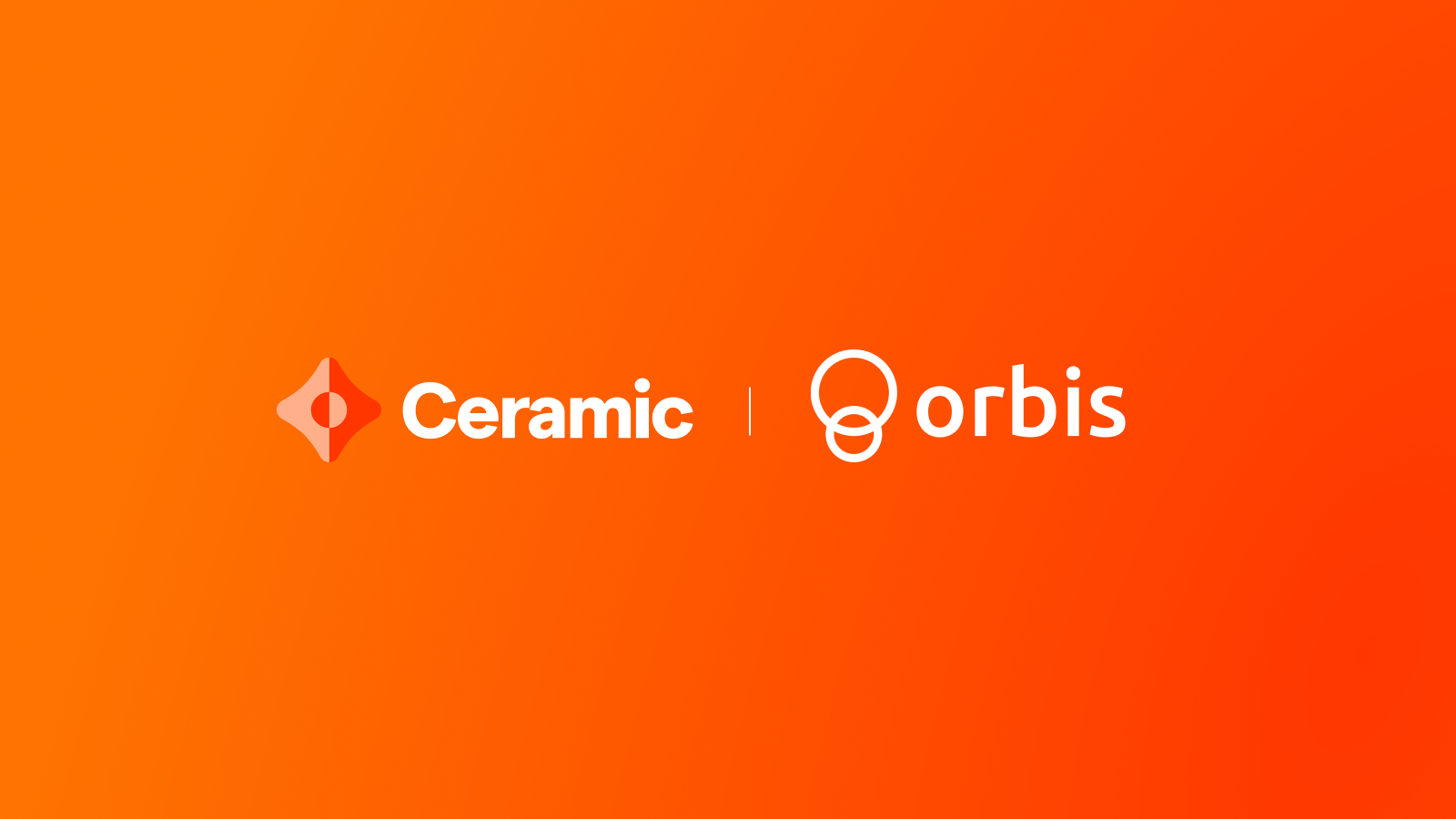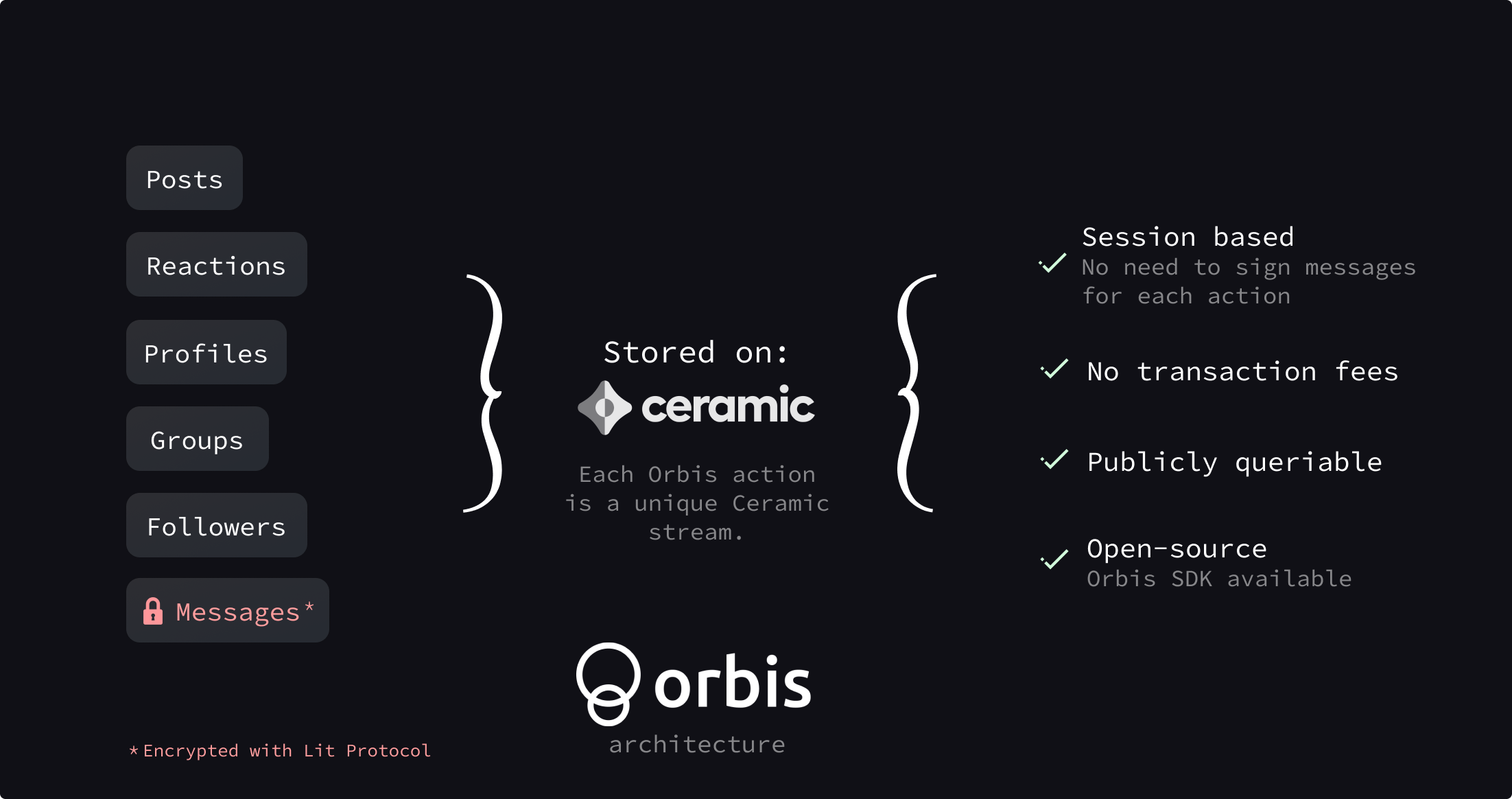Orbis Launches on Ceramic Mainnet to Supercharge Social on Web3
Orbis protocol enables developers to build with Ceramic's data infrastructure, facilitating performant social experiences for millions of users.

Orbis introduces a new social data model where everything is decentralized, composable, easy-to-use, and readily accessible to developers. Developers can use it to build features such as social timelines, comment systems or private messaging on top of their applications, with the underlying Ceramic data infrastructure facilitating performant social experiences for millions of users.
Orbis’ journey started on Ceramic’s Clay Testnet in December last year. In a few months, Orbis generated more than 70k Ceramic streams and over 20k unique posts. Today, Orbis is launching on Ceramic Mainnet with an improved user experience and opening its SDK to external developers to let anyone build fully decentralized social apps or social features on top of the Orbis architecture.
The SDK documentation is available here for developers interested in building decentralized social applications: https://orbis.club/developers
Web3 Social With Web2 Performance
Social media’s current model is entering decline as users increasingly question data ownership and how they share value with those platforms. Users face the same trade-off: a great experience that meets their needs, but one that requires giving away their data and time in return. Web3 social promises all of the benefits of digital interaction while preserving a user's ownership of the data and value they create. Orbis offers a solution to this challenge—enabling a Web2 experience with Web3 benefits thanks to Ceramic.
To reach hundreds of millions of people, Web3 social must be as easy to use as Web2 and shouldn’t introduce a new set of frictions—such a wait times, transaction fees or chain restrictions. This is why we decided to build Orbis on Ceramic, which is by far the best technology for data-intensive decentralized applications.
Whether it’s DeFi, Gaming, or NFTs, Orbis makes adding social functionality a simple plug-in and lets developers focus on the unique features of their projects. As developers ourselves, we know that we must optimize your time and enable a better social experience for your users. Better still, the composability of Orbis and Ceramic means that the user's social experience can be enriched and extended across platforms. For example, an insightful commenter’s responses to articles can be aggregated into another news platform or a discussion group, rather than being siloed in the original platform or fragmented across many sites.
With the help of Ceramic’s infrastructure, Orbis:
- Creates social experiences with no fees or friction—connecting your wallet on Orbis creates your unique identity on Ceramic; after that, all social interactions automatically attach to this identity without the need for additional signatures
- Builds network effects across its social graph to create a persistent user experience across apps—users bring their profile with them
- Provides users with a similar performance to their favorite Web2 social experience
- Equips developers with easy-to-add social modules to plug into their applications
- (Coming soon) Users can join Orbis using different chains such as Cosmos or Solana
Hundreds of Possibilities With Orbis Protocol
Orbis protocol will be represented by several collections of modules that developers can use to supercharge their applications. Developers building on Orbis can pick and choose modules as social lego bricks to power many different use cases:
- Blockchain games could use the
ProfileandDirect Messagemodules to build a fully encrypted and decentralized chat application embedded on their own website - An NFT project developer using the
Profile,Context,PostsandReactionsmodules can build a simple social feed that aggregates content specific to their project and community - A content platform developer using the
Profile,Context,Postsmodules can add a fully decentralized commenting system for readers and viewers to discuss and engage with the creator
All of these modules have already been built and are now being used on orbis.club.
Unlocking the Power of Ceramic
Web3 social must offer the same frictionless user experience as Web2 applications to gain adoption. All while bringing Web3 benefits such as composability, portability and decentralization. This is what Ceramic offers.
Orbis Data Specified Using the Ceramic Schemas Feature
Imagine if your social interactions could follow composable standards similar to the successful ERC20 or ERC721 specifications. It would allow users to bring and view their data in many different types of applications, as they are doing with NFTs.
You could send a message to someone using a specific app and have the recipient read it in a completely different application—that's what Orbis does—and since it’s built on Ceramic, developers aren’t constrained to transactions fees or long write times.

What’s next for Orbis?
Orbis will onboard additional providers, in the coming months, allowing users to create their Ceramic identity and Orbis profile using other ecosystems such as Solana or Cosmos.
The team will also be working very closely with external development teams to help them navigate the Orbis SDK.
If you're interested in adding a decentralized social layer to your application, or you want to build a fully decentralized and composable social network, we recommend exploring the developer documentation here and to join our developer channel.
Website | Twitter | Discord | GitHub | Documentation | Blog | IDX Identity

